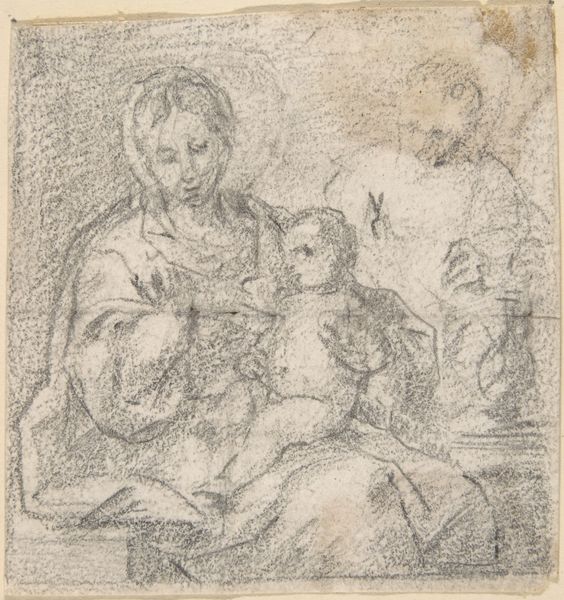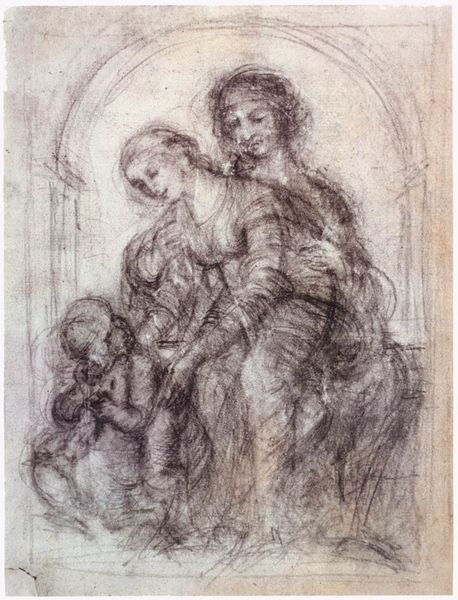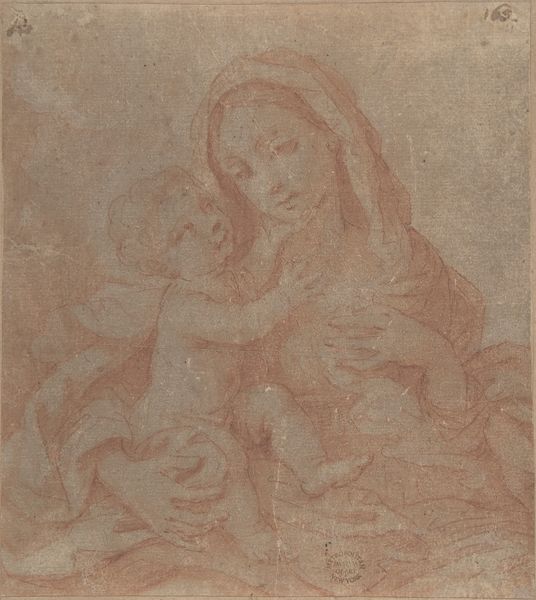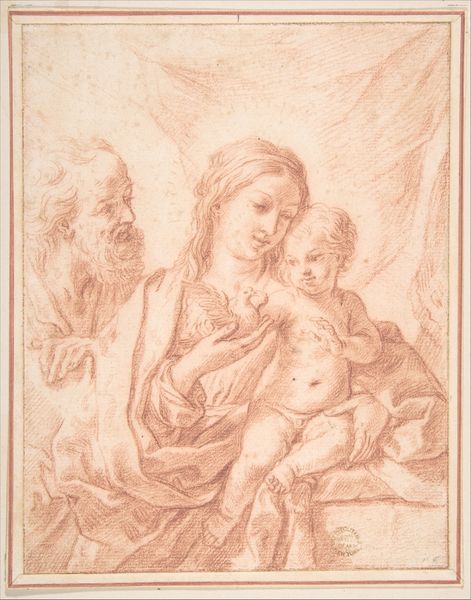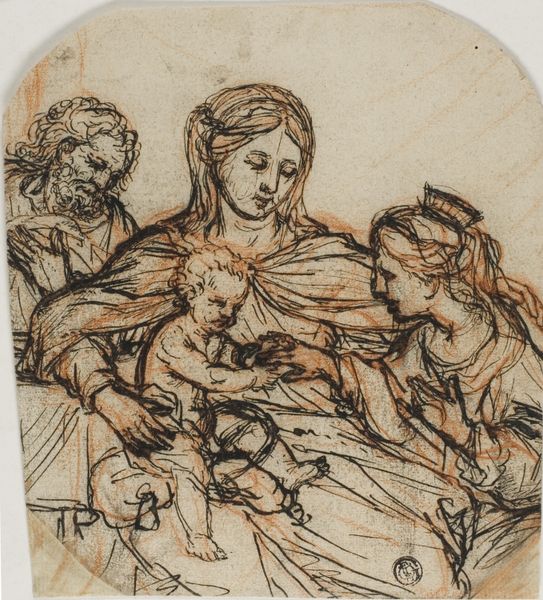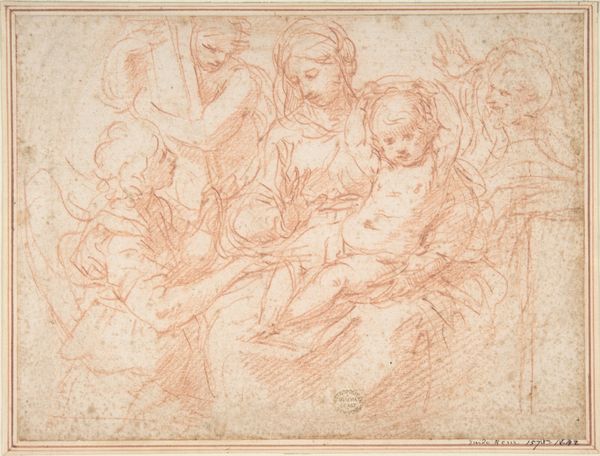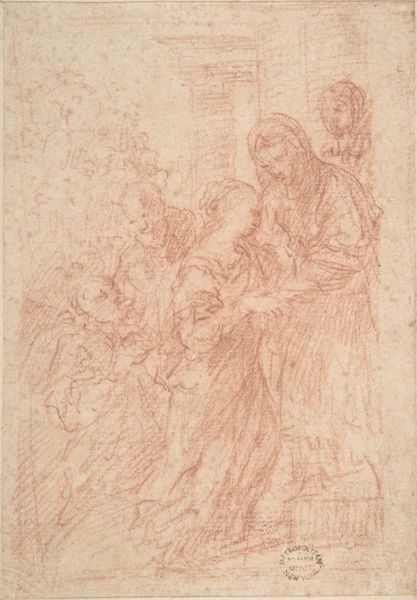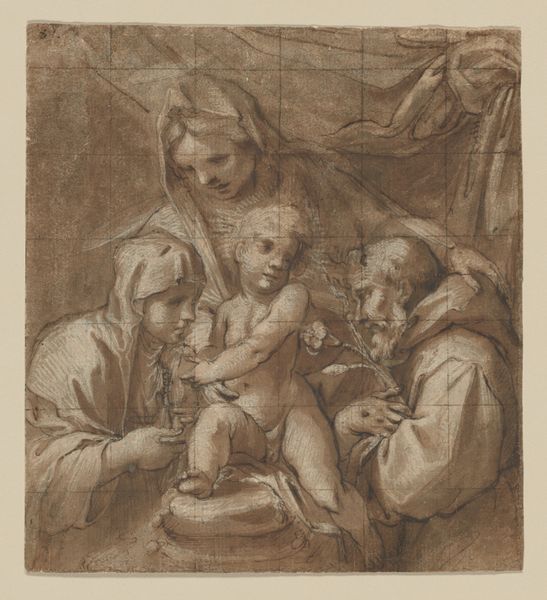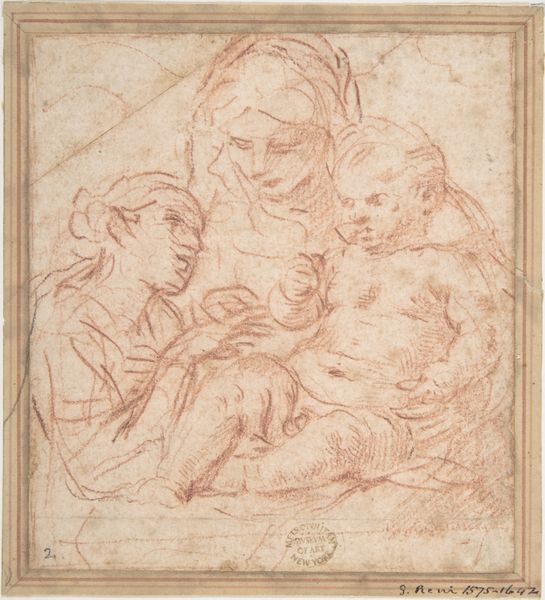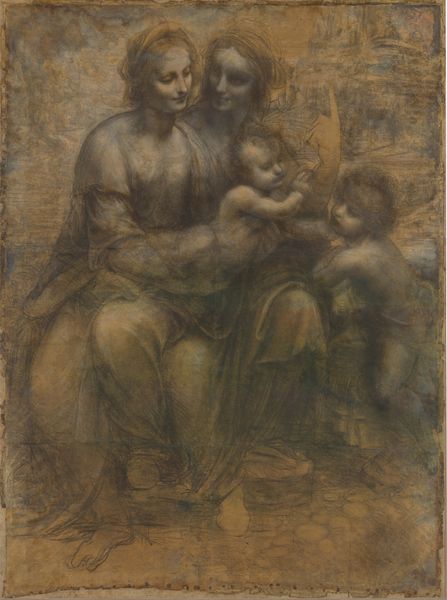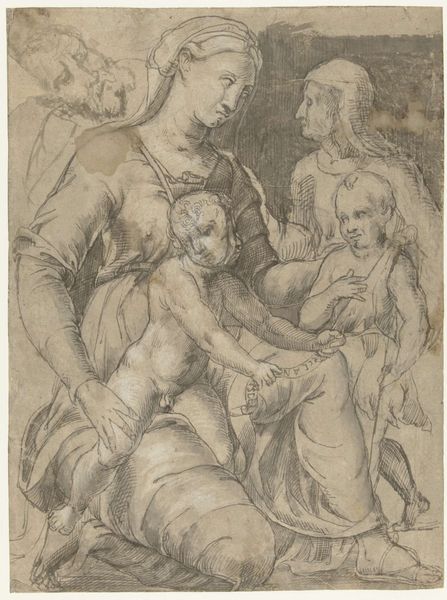
Virgin and Child with Two Saints (recto); Fragmentary Design of a Pietà (verso) 1515 - 1520
0:00
0:00
drawing, print, paper, charcoal
#
portrait
#
drawing
# print
#
charcoal drawing
#
figuration
#
paper
#
11_renaissance
#
charcoal
#
history-painting
#
italian-renaissance
Dimensions: sheet: 8 1/16 x 6 1/8 in. (20.5 x 15.6 cm)
Copyright: Public Domain
Curator: This drawing, held here at the Metropolitan Museum of Art, is attributed to Domenico Puligo and dates to between 1515 and 1520. It depicts the Virgin and Child with Two Saints and, interestingly, a fragmentary design of a Pietà on the verso. Editor: A first impression? Melancholy. The reddish-brown charcoal evokes a feeling of warmth tinged with sadness. It feels very intimate, very human, and the child has a wonderfully chubby little belly. Curator: Indeed, the medium itself, charcoal on paper, lends to this sense of immediacy, almost as though we are witnessing the genesis of an idea. The composition, typical of the Italian Renaissance, places the Virgin centrally, her gaze directed downward in a tender, protective way, drawing focus on her son. Editor: Right. And those flanking saints – are they observing or protecting? Their gaze seems inward, lost in some reverie, while the Virgin feels so anchored, a still point amid their pensiveness. The line work contributes, doesn’t it? There’s a hatching technique creating depth, shadows defining contours and a really strong presence. Curator: Exactly. Puligo uses this chiaroscuro to great effect, modeling the figures with a play of light and shade, enhancing the three-dimensionality and emotional weight of the scene. It invites the viewer to not merely observe but to feel the profound connection between mother and child, a powerful symbol in Christian art. The linear quality reinforces this, especially where lines are feathered and more fluid, contrasting other bolder markings. Editor: The verso, the fragmented Pietà... do you think that was a premonition, or a commentary on the inescapable sorrow linked with such intense love? That this drawing, this study is both hopeful and foreshadowing, creating tension. It's really remarkable when you realize both the subjects and how each composition reflects themes of human love and loss through faith. Curator: Possibly. It adds a layer of complexity, acknowledging the suffering inherent in the Christian narrative, turning this study into more than a beautiful representation of faith; it suggests this acceptance of mortality is present even with love, creating duality that lingers. Editor: Beautifully put. Makes you think, doesn't it, about how beauty and sorrow are often so intertwined. Curator: It certainly does. An amazing moment, frozen in charcoal.
Comments
No comments
Be the first to comment and join the conversation on the ultimate creative platform.

